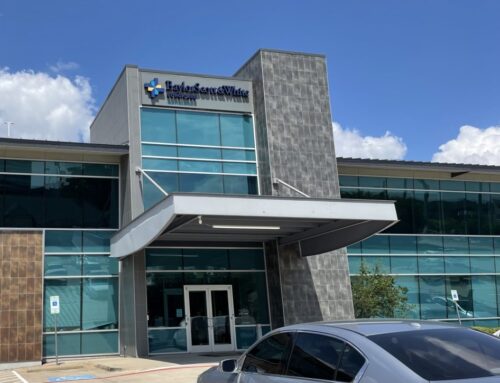The answer isn’t just skin deep
No neighborhood in Dallas has as many school choices as Preston Hollow. The lion’s share of the city’s private schools is located within easy driving distance and most homeowners have the means to send their children to one.
For many families, public school isn’t even a consideration. And that’s how Dallas winds up with a school like Preston Hollow Elementary, which is situated in one of the city’s wealthiest areas and even has a prestigious International Baccalaureate program, but more than 80 percent of its students come from families who make less than $44,123 a year — the line that defines poverty, according to the state of Texas.
Perhaps this actually benefits Dallas ISD. Homeowner families pay property taxes to the district on top of the tens of thousands they shell out for private school, so it’s a win-win, right? Rich families can send their children to whatever school they deem best and the school district can still educate poor kids on these families’ dimes.
But if that’s the case, then why is DISD spending so much time and effort creating more educational options for parents who are opting out?
The key lies in a seven-minute YouTube video that appeared on Dallas ISD’s website early last fall, somewhat hidden in a drop-down menu on the Public School Choice page and watched by relatively few. The video was titled “The Case for Socioeconomic Diversity” and created by the district’s Office of Transformation and Innovation (a fancy description of choice schools). It argued that the merits of socioeconomic diversity are “almost entirely overlooked, despite decades of strong evidence that it’s one of the most powerful strategies available to us to improve student achievement.”
In other words, if we mix rich kids and poor kids in schools and classrooms, the poor kids perform better, studies show, and rich kids fare just as well — and both benefit from attending school with each other.
The man at the helm of the choice school movement is Mike Koprowski, who was hired by former Supt. Mike Miles two years ago. Koprowski didn’t need his Harvard graduate school degree to realize “we have a very economically segregated school district. No matter what map you look at, it tells the same story.”
Much of the segregation in our schools can be attributed to the segregation in our neighborhoods. When the Pew Research Center analyzed the concentration of low-income and upper-income residences in the nation’s metro areas, Dallas ranked near the top in both categories. The Urban Institute also named Dallas the worst offender in terms of neighborhood inequality.
In other words, here in Dallas, the rich are much more likely to live among the rich and the poor among the poor.
But as Koprowski’s data shows, our school district is even more segregated than our city. Despite the sky-high median incomes in Preston Hollow and North Dallas, only two neighborhood schools can be labeled “socioeconomically diverse,” meaning their student body make-up is right around 50/50 rich and poor. One is DeGolyer Elementary next to Webb Chapel Park; the other is Dealey Montessori on Royal near Hillcrest, whose magnet status requires admission to students in various regions of the district.
A couple of other neighborhood schools are close — Withers Elementary next to Northaven Park, Kramer Elementary near Hillcrest and Northaven, and Hillcrest and W.T. White high schools are right around 40/60 rich and poor.
In the rest of our schools, however, and across most of the district, more than 80 percent of students live below the $44,123 poverty line.
“We’re silo-ed off,” Koprowski says. “Those who have means have largely opted out of the district, and those without means are largely in the district.”
To learn how this happened, he leaned on Dallas Observer columnist Jim Schutze’s 1987 book “The Accommodation,” which tells the story of Dallas ISD’s desegregation in the ’70s. Around the same time, he read “All Together Now” by Richard Kahlenberg, which focuses on bringing together kids from diverse socioeconomic backgrounds.
“I thought, ‘This can be a core component of school choice,’” Koprowski says. It hasn’t been featured prominently in the effort, but “I kept it in the back of my mind,” he says.
Integration is a more succinct description of what Koprowski is trying to accomplish, but there’s a reason he’s not using that term.
“There’s nothing magical about putting a white kid next to a black kid,” Koprowski says. “The socioeconomic piece is really the powerful component.”
He’s not enough of an idealist, however, to think that altruism alone will “bring back an entire socioeconomic group.” The genius of choice schools is that though they are designed to impact the most at-risk Dallas ISD students, they also appeal to the segment of families drawn to private schools.
International Baccalaureate (IB). Montessori. Bilingual. Personalized learning (which has been described as “high-tech Montessori”). All of these in-demand curriculum approaches are now available to Dallas ISD families — sans the magnet-like academic entry requirements — and the needle is beginning to move.
Mike Lyons lives in Windsor Park within Preston Hollow Elementary’s boundaries, and when he and his then-pregnant wife moved into their home a few years ago, public school wasn’t on their radar.
“The sort of pervasive mindset in Preston Hollow is you just send your kids to private school; that’s just what you do.” So now, when he tells people he’s considering public school, “it’s almost like I said I have four heads and I’m part lizard.”
DISD’s demographics scare people, he says — high numbers of economically disadvantaged students and non-native English speakers who change schools frequently — “those things are all black marks in a lot of people’s books,” Lyons says. “You get that and the test scores as data, and that’s it.”
He recently hosted a meeting in his home for parents interested in Preston Hollow Elementary, and nine families from his six-street neighborhood showed up. They learned from a current parent that about half of its students transfer to the school because of its IB curriculum.
It’s reassuring, Lyons says, for a school to attract parents “who I know have bought into their kids’ school and their kids’ education, and if your neighbors and you all kind of go in together, then you know, I’m not doing this alone. I’ve got a lot of people with me.”
It’s the “critical mass” factor, he says. “It’s a nicety to say, give me involved parents and I’ll give you a good school, but it’s true, right?”
One of the main reasons integrated schools are effective is that middle- and upper-class parents have more time to volunteer and pull in community resources, and the know-how to advocate for their campuses, while low-income parents often are “working the third job to pay for gas to the second job,” Koprowski says.
There’s also the “peer effect,” as he calls it. For example, low-income children come to school with about half of the vocabulary of their of peers, and much of that vocabulary is shared in informal settings, such as bathrooms, cafeterias and playgrounds. Data also shows that the most experienced, effective teachers are drawn to more socioeconomically diverse schools, he says.
All of this adds up to low-income students in mixed-income schools being able to perform two grades ahead of those in impoverished schools, Koprowski says.
And for parents worried about the reverse effect, Koprowski insists it’s an urban myth.
“Look at the research — that’s not what happens,” Koprowski says. “Middle-class kids do just fine academically. They have the ultimate wraparound service, which is affluent parents.”
And on the flip side, he says, “If you’re going to prepare your kid to succeed in a diverse society, think of all the social and moral things you gain by opting into the public enterprise.”
If integration happens, it will happen school by school. The outlook is bleaker on the district level — even if all of Dallas’ middle- and upper-class families re-enter public schools, the district’s socioeconomic stats wouldn’t be 50/50.
And that’s “perfectly fine,” Koprowski says, because diversity is not the “be-all end-all” of choice schools or even academic success.
“This city has a painful history with race and class relations,” Koprowski says. “These problems didn’t happen overnight; they’re not going to get solved overnight with my choice initiative.”
He sees signs of hope, however. More than 60 years after Brown v. Board of Education and 45 years after Dallas’ own court-ordered desegregation, Dallasites may be starting to naturally integrate.
“It’s all voluntary. This isn’t the days of desegregation where it was forced busing,” Koprowski says. “Parents are opting in.”
Related Advocate stories:
“The advantage of being disadvantaged”
“Worship: Blending schools, building community”
“Integration: Everybody’s doing it — but will it work in Dallas?”






